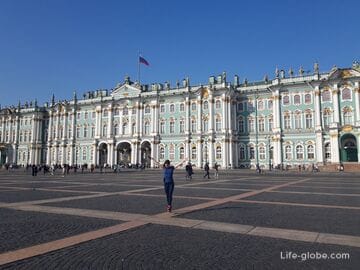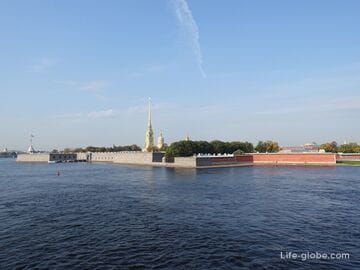The Peterhof Palace and Park Ensemble is one of the most beautiful and visited places in St. Petersburg.
The palace and park ensemble is located on the southern shore of the Gulf of Finland, in Peterhof (St. Petersburg).
The Peterhof Palace and Park Ensemble includes: the Grand Peterhof Palace, the Upper Garden and the Lower Park, which together represent a large-scale work of landscape art, architecture and history, and are also included in the UNESCO World Heritage List.
The Grand Peterhof Palace (or simply the Grand Palace) is the core of the ensemble, the pearl of history and the Baroque style, which now houses museums. The palace is surrounded by:
- The Upper Garden, which contains alleys, stalls, a rose garden, the Petrovsky pharmacy garden, ponds and pools with fountains. Learn more about the Upper Garden...
- The Lower Park, which contains small palaces and pavilions, where museums are now located; sculptures and monuments; a pier, ponds and flower beds; alleys and places for recreation; and, most importantly, numerous fountains, thanks to which the Lower Park is also known as the "Fountain Park". Learn more about all the fountains in the Lower Park…
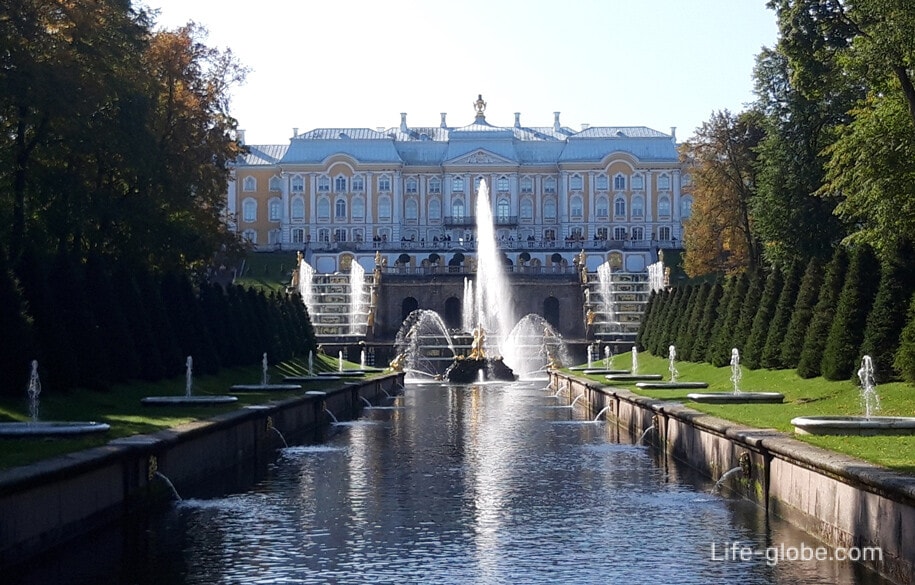
Peterhof Palace and Park Ensemble Museums»
The museums are located within the walls of the Grand Palace and on the territory of the Lower Park.
Peterhof Grand Palace Museums
In the palace you can visit some rooms-museums: the halls of the Peterhof Palace, a special storeroom, the Church Building and the fountain Museum.
Visiting each of the museums is possible for a fee.
Halls of the Peterhof Palace
In total, there are about 30 halls in the walls of the palace, among which there are magnificent state rooms decorated with mirrors, parquet, stucco, "gold" and paintings; as well as the grand staircase, the Throne Room with a throne chair, the memorial hall, the picture hall, offices, reception rooms, dining rooms, the private chambers of the imperial family and a small sculpture gallery of the palace, where an authentic collection of sculptures from the 18th century is presented.
You can visit the halls of the Grand Palace in Peterhof as part of an organized tour that is regularly held around the palace.
When visiting the halls of the Grand Palace, guests will walk through the restored halls of the former Peterhof Palace, while learning the history of the palace and seeing some decorative and applied art items, furniture and works of sculpture and painting located in the halls of the palace museum. Read more about the halls of the Peterhof Palace with photos…
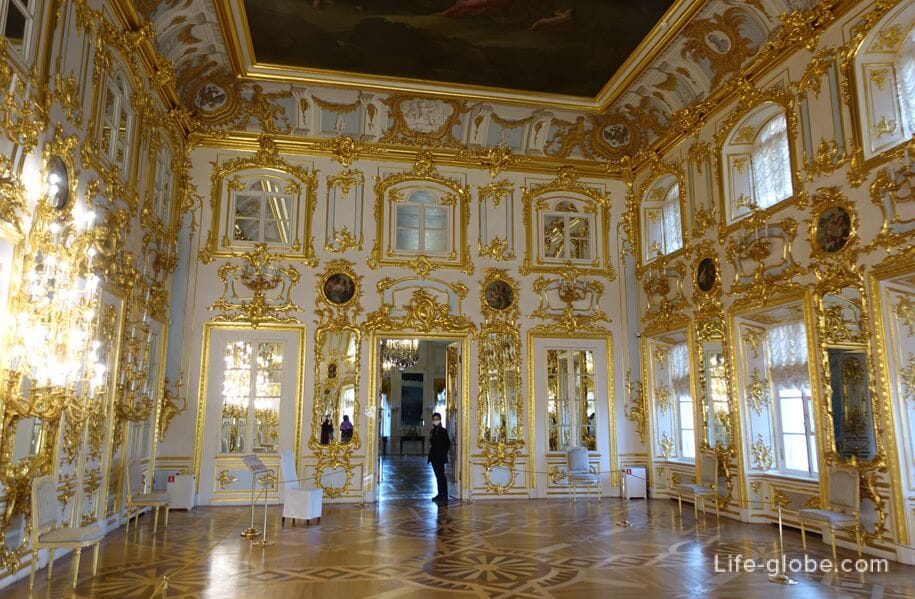
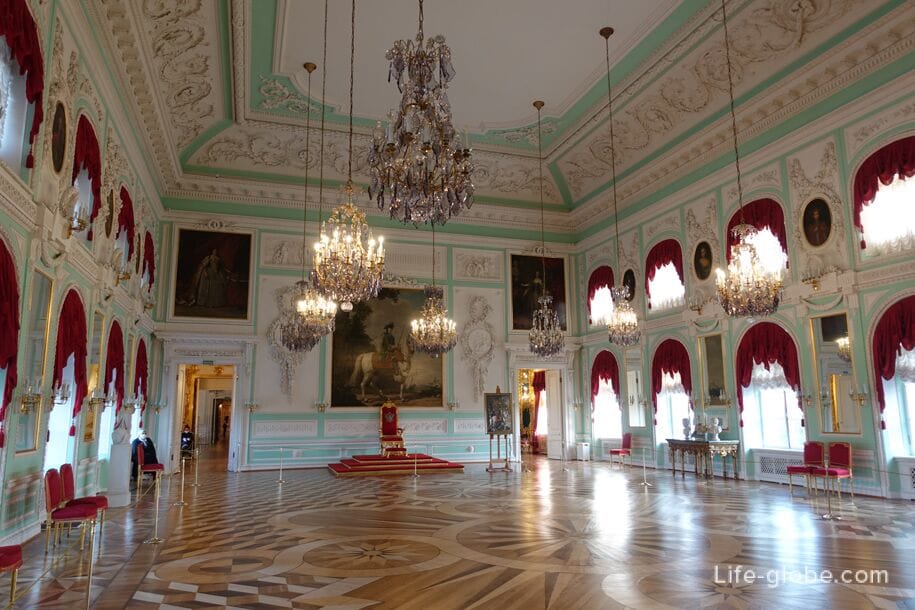
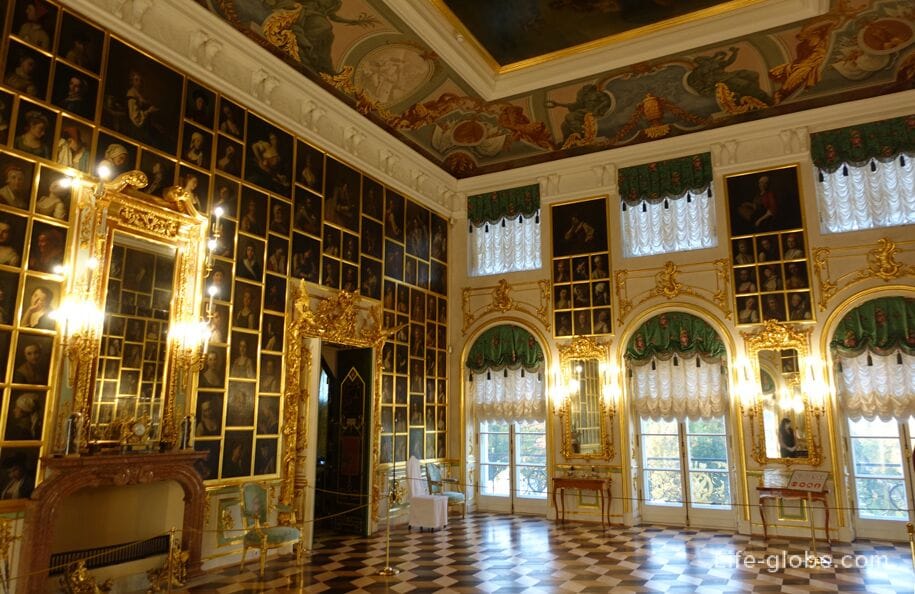
Church building
The church building served as the imperial court church and was built in 1747-1751 by the will of the Empress Elizabeth Petrovna, designed by F. B. Rastrelli.
The interior of the building combines Orthodox traditions with the ideas of Western culture and the Baroque style: bright paintings, gilded carvings, the absence of the Last Judgment scene, and the soft and kind faces of saints embody the idea of intercession for people.
The plan of the church hall is also unusual - in the form of an octagon. The dome's vault also has eight faces. It depicts the Evangelists, the apostles, and the saints.
On the 6-tier iconostasis there are 40 icons. Many saints on the icons are depicted in a state of emotional tension, expressed in poses, gestures and turns, characteristic of Baroque painting.
A small exhibition in the Refectory is dedicated to the history of the palace church.

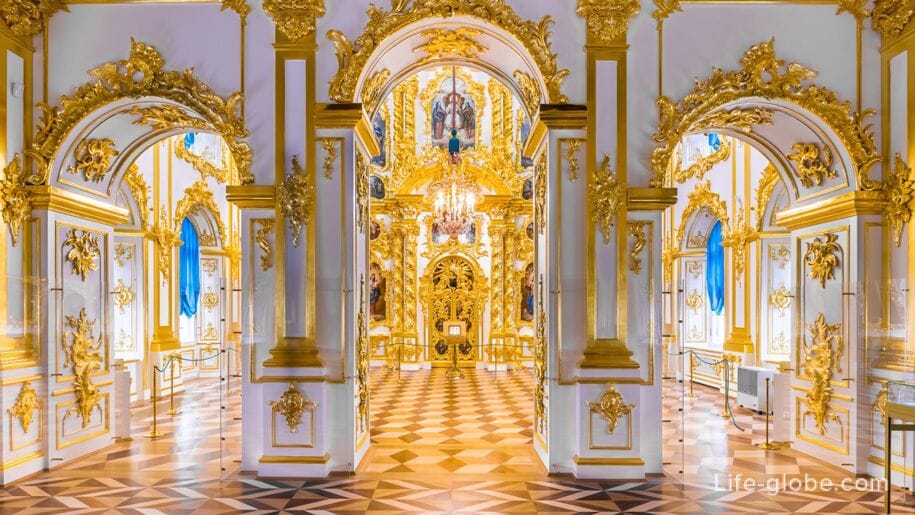
Special storage room
A special storeroom is located in the west wing of the Grand Palace.
This wing, built according to the project of Rastrelli under Elizabeth Petrovna, was called "Buildings under the Coat of Arms" due to the fact that the dome of the building is crowned with a weather vane in the form of a heraldic double-headed eagle.
The rooms of the "Building under the Coat of Arms" were intended for the residence of noble guests and members of the imperial family. The Empress Catherine II herself lived in the apartments of the building, and the current museum displays a complex of her personal chambers.
In the Museum "Special treasure" presents: Church utensils; works of applied art and jewelry; clothing items, including costume of Peter I, the shoes and uniformed dress of Catherine II's uniform of Nicholas I and the things of dowry middle daughter of Nicholas I, Grand Duchess Olga Nikolaevna; premium gifts that were ordered by the Imperial court of the leading jewelers (cups, snuff, brooches, cigarette cases, watches and rings with the image of the eagle or the monogram of the Emperor); desktop jeweler, where the tools of the St. Petersburg masters the beginning of the 19th century the owner of the company "Russian enamel" And S. Britsina; products Faberge firm that once decorated the palaces of Peterhof under the emperors Alexander III and Nicholas II.
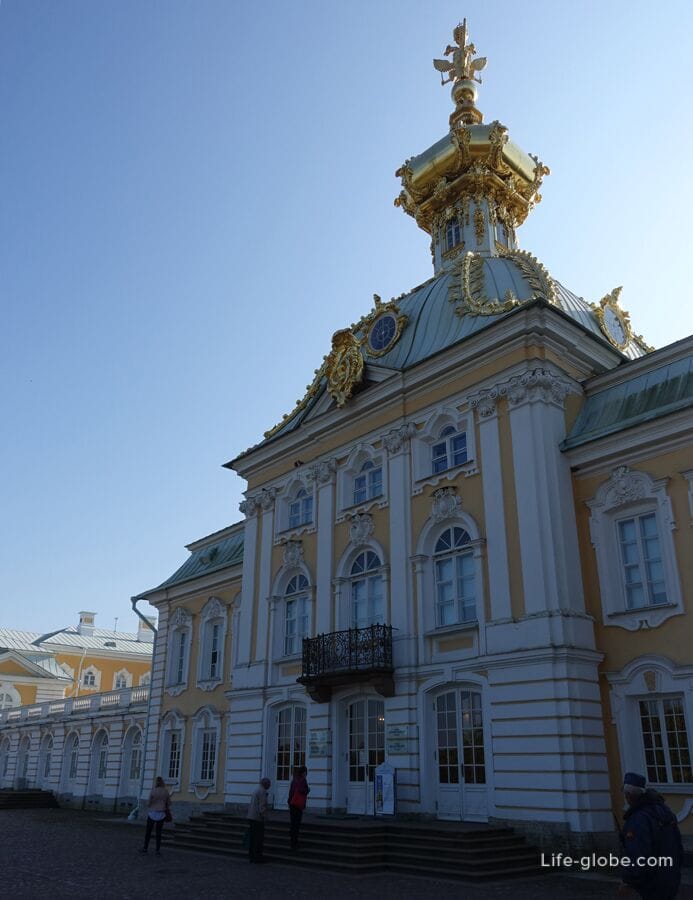
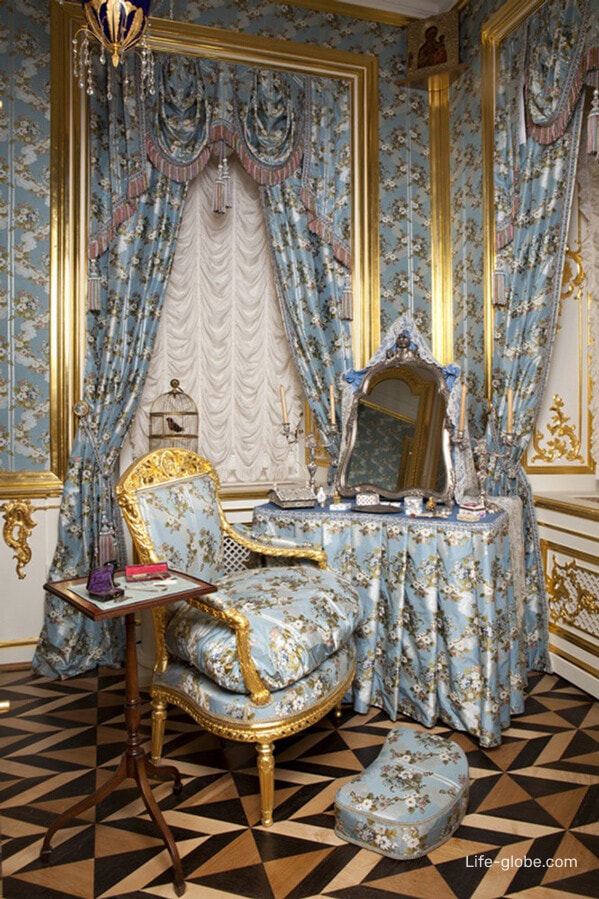
Fountain Art Museum
The Fountain Art Museum is located in the eastern gallery of the Grand Peterhof Palace.
The museum's exposition is devoted to fountain art, the history of the creation and development of the water supply system of Peterhof. The exhibition of museum exhibits is combined with the use of modern multimedia tools. On one of the plasma screens, images of famous European residences alternate, visiting which Peter I decided to create a palace and park ensemble on the southern shore of the Gulf of Finland.
Also in the museum you can see images of historical buildings that have not survived to this day, fragments of wooden and cast-iron pipes of the 18th century, details of water equipment, fountain nozzles, as well as tools used by fountain masters.
The museum also introduces documents dedicated to the restoration of the fountains of Peterhof after the Great Patriotic War.
One of the museum's rarities is a plaster model of the sculpture group "Samson tearing the Lion's Mouth", made in 1947 by Vasily Simonov. This sculpture has become a symbol of Peterhof. Learn more about the Grand Palace and museums…
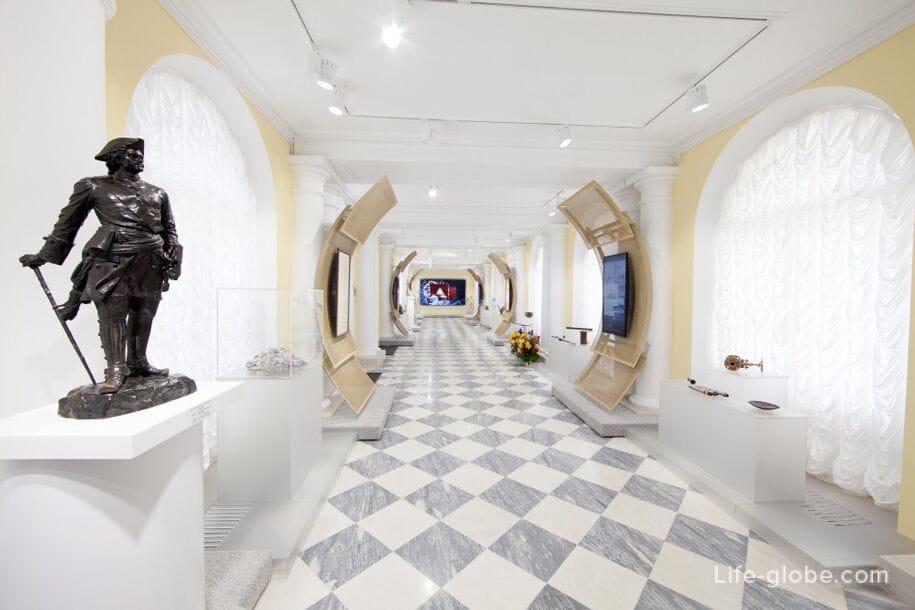
Peterhof Lower Park Museums
Entrance to each of the museums of the Lower Park is paid (paid separately).
Grottos of the Grand Cascade
The central compositional place of the Front Part of the Lower Park is occupied by the grandiose Grand Cascade Fountain with grottos, the Basket Fountain and the Samson Fountain, which has become a symbol of Peterhof.
These fountains visually represent a single impressive and grandiose architectural and water ensemble of Peterhof. It is also one of the most outstanding buildings in the world.
The Grand Cascade Fountain consists of two massive seven-step staircases running down the slope in front of the palace, connected by arches of a Large Grotto and decorated with sculptures.
The grottos of the Grand Cascade are now a museum. In the museum you can see the original brickwork of the time of Peter I; pipes through which water is directed to the fountains of the Grand Cascade and the scheme of the fountain conduit-a monument of hydrotechnical art of the 18th and 19th centuries; as well as the former fountains-firecrackers "table with splashing" and "water curtains". Learn more about the fountain ensemble and the grotto museum with photos and videos…
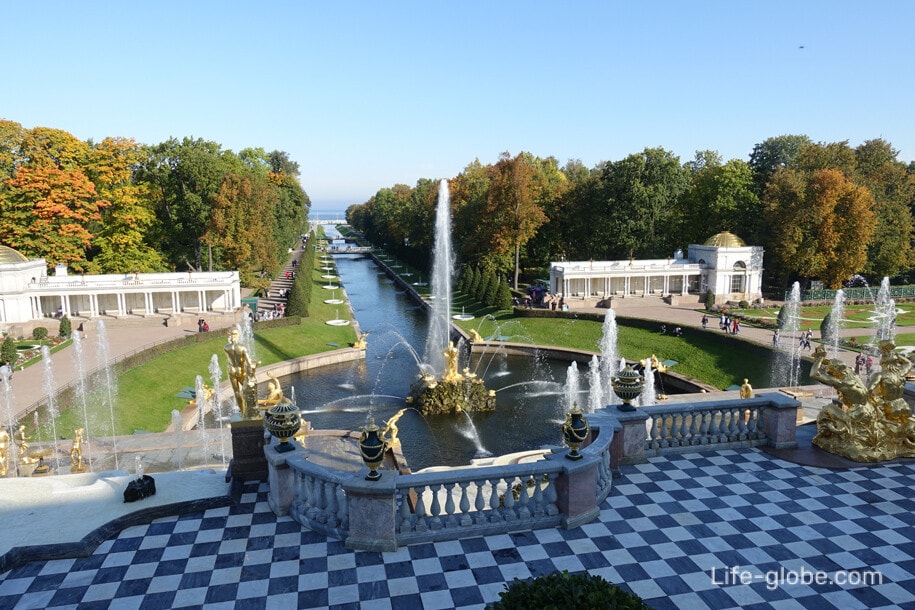
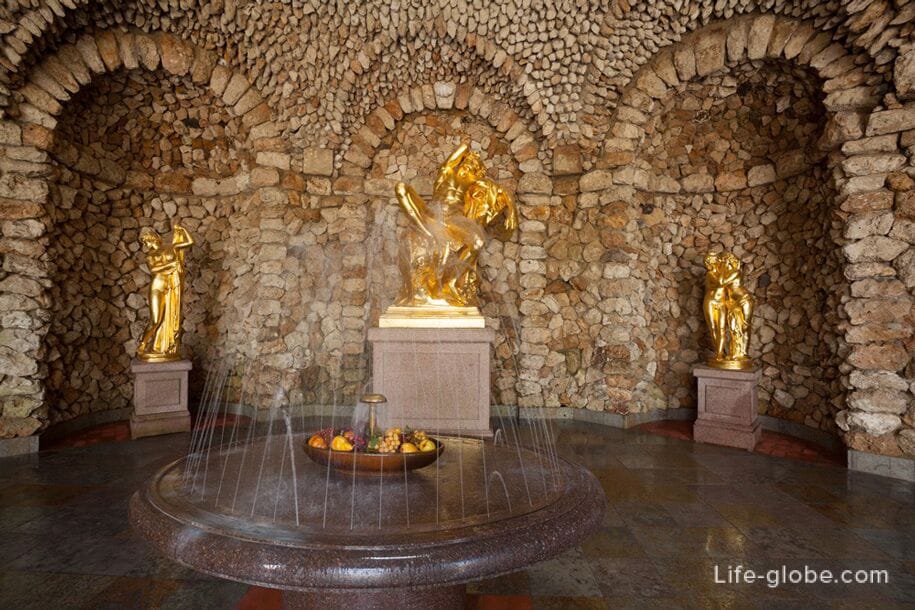
Marley Palace
The Marly Palace is one of the pavilions, the so-called small palaces, which was built by order of Peter I in 1720-1723 by the German architect-decorator Johann Friedrich Braunstein.
The palace was used as a guest house for the residence of nobles and members of the imperial family.
Today, the palace houses a museum, whose collection tells about the time of Peter the Great and contains memorial items related to the personality of the first Russian emperor; the basis of the museum's painting collection consists of paintings, including works by Adam Silo, Abraham Stork, Pietro Belotti and other artists. More about the Marly Palace…
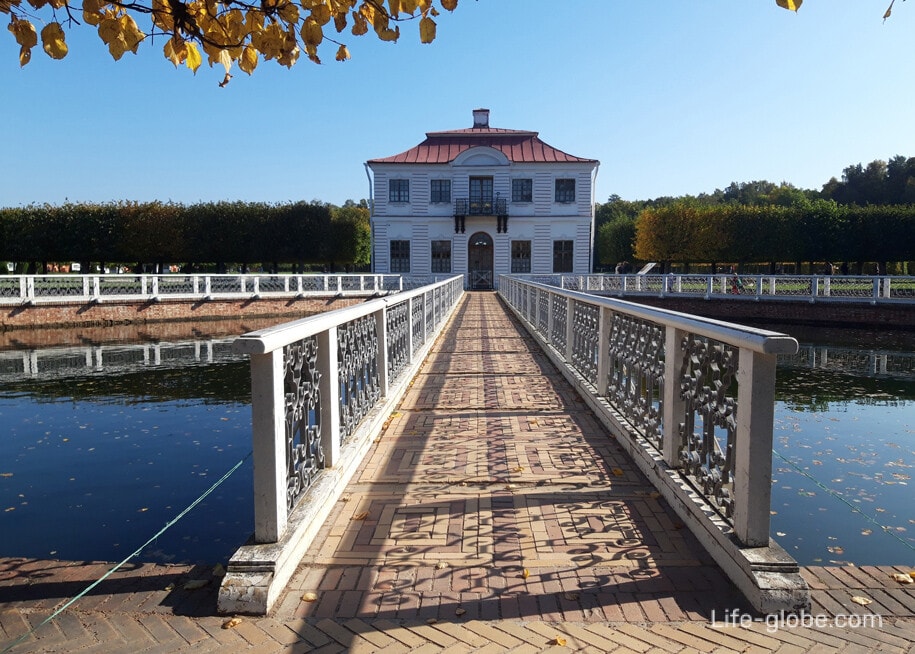
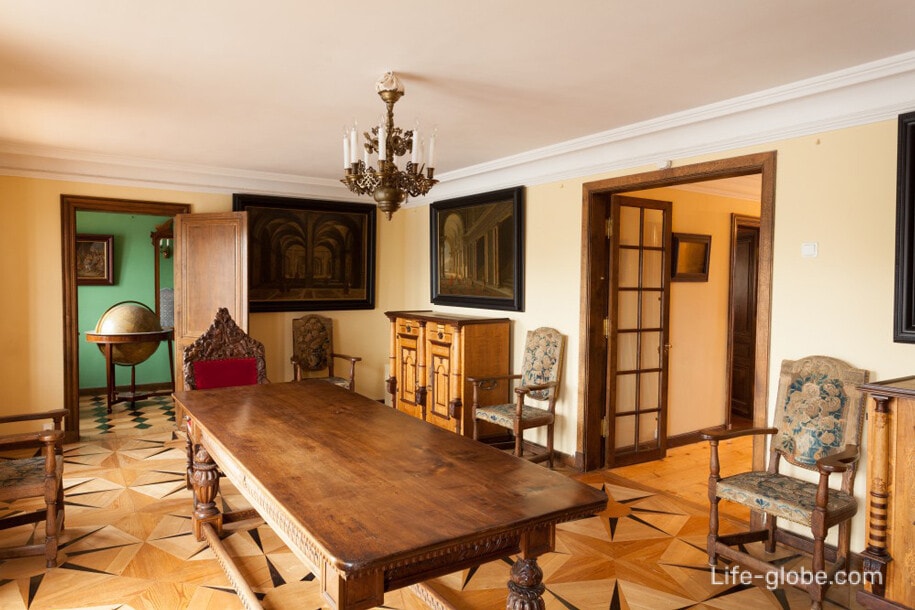
The Hermitage Pavilion»
The construction of the Hermitage Pavilion began in 1721, designed by architect I. Braunstein.
The Hermitage is a small two-story building, standing on a massive base-a stylobate and surrounded by a deep, wide moat. The moat was previously filled with water and a drawbridge was thrown over it.
Today, within the walls of the Hermitage pavilion, there is a museum, the jewel of which is a table with a lifting mechanism-a miracle of technology of the first quarter of the 18th century. Learn more about the Hermitage Pavilion»…

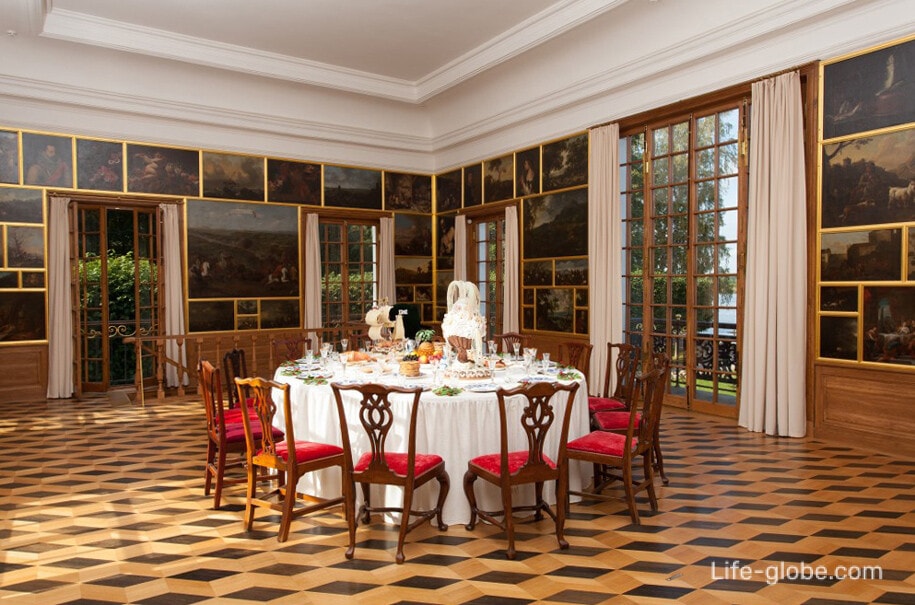
Imperial Yachts Museum»
The Imperial Yachts Museum, also called the Maritime Museum, is located in a small building near the pier of the Gulf of Finland.
The museum's exposition is dedicated to an unfamiliar page in the life of the imperial family - the history of the St. Petersburg fleet and the construction of yachts, which was initiated by Peter I, gained strength during the reign of Catherine II, and a special flourishing began during the reign of Nicholas I. Learn more about the Imperial Yachts Museum»…
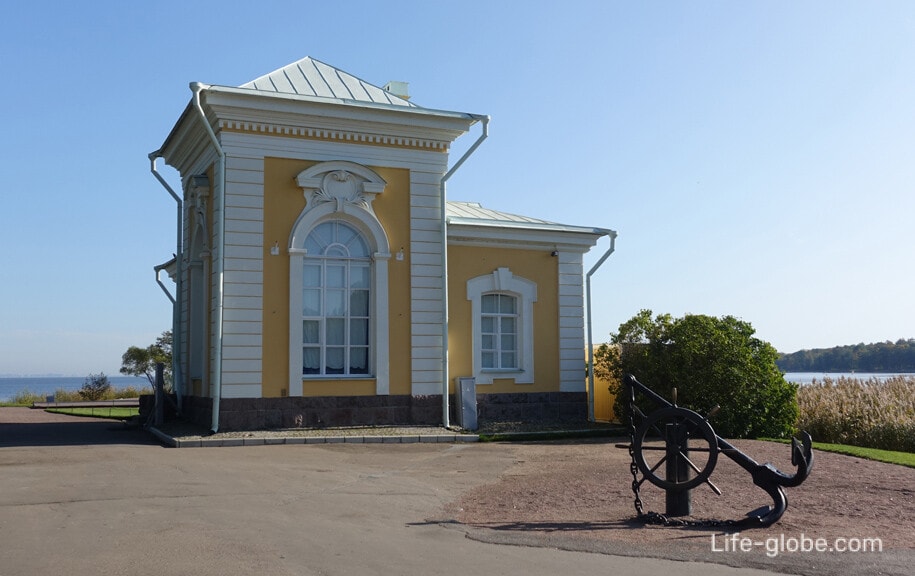
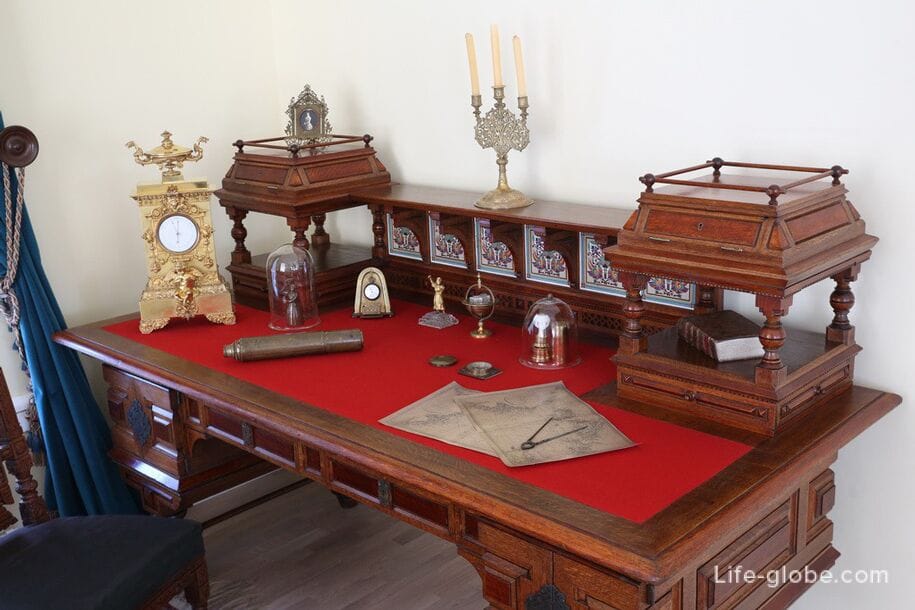
Montplaisir Ensemble
The main complex of the western part of the Lower Park is the Monplaisir Ensemble, which includes the garden of the same name with flower beds and fountains, as well as three buildings with museums:
- the palace of Montplaisir, from which the ensemble itself and the entire eastern part of the park were named.
The palace was built in 1714-1723 according to the plan of Peter the Great.
Today, within the walls of the palace there is a museum with corridors, rooms, an office and a kitchen.
The galleries and rooms of the palace are decorated with paintings of Western European paintings of the 17th and 18th centuries, most of which belong to the original collection collected by Peter I.
The walls of the palace's Lacquer Cabinet are decorated with large black-and-lacquer panels with miniature paintings made in the Chinese style.
In the kitchen, decorated in the Dutch style, some dishes are displayed. And the study of Peter I is connected with the maritime theme.
Also in the museum are some preserved personal belongings of Peter the Great: a felt nightcap, a towel, a pitcher and a basin for washing;
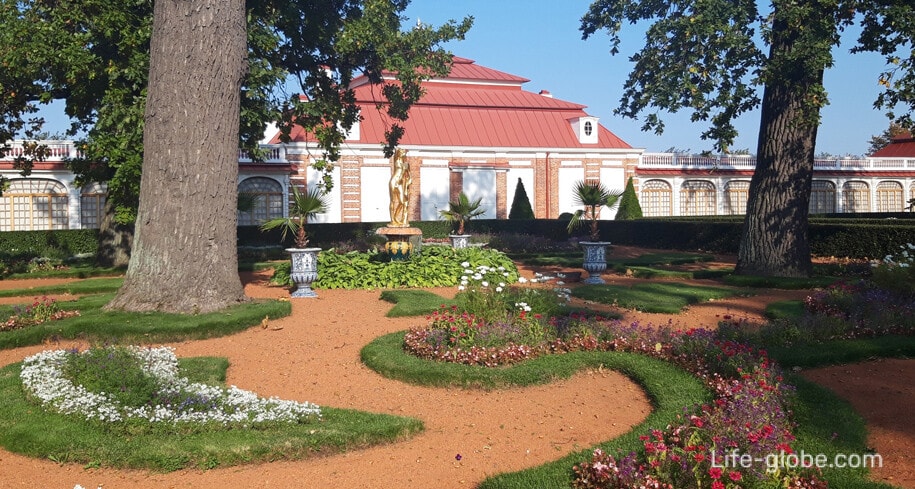
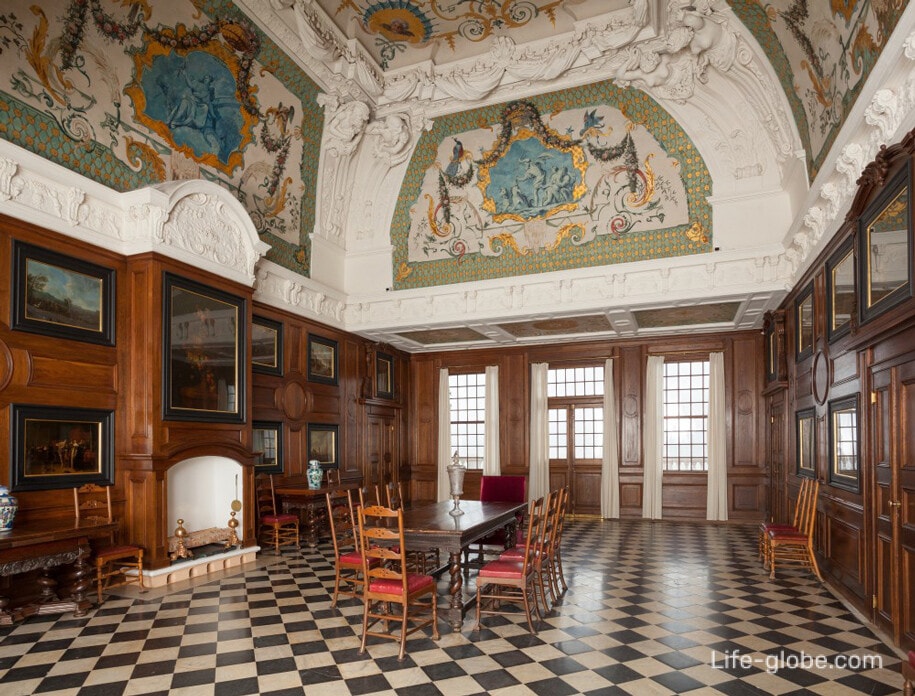
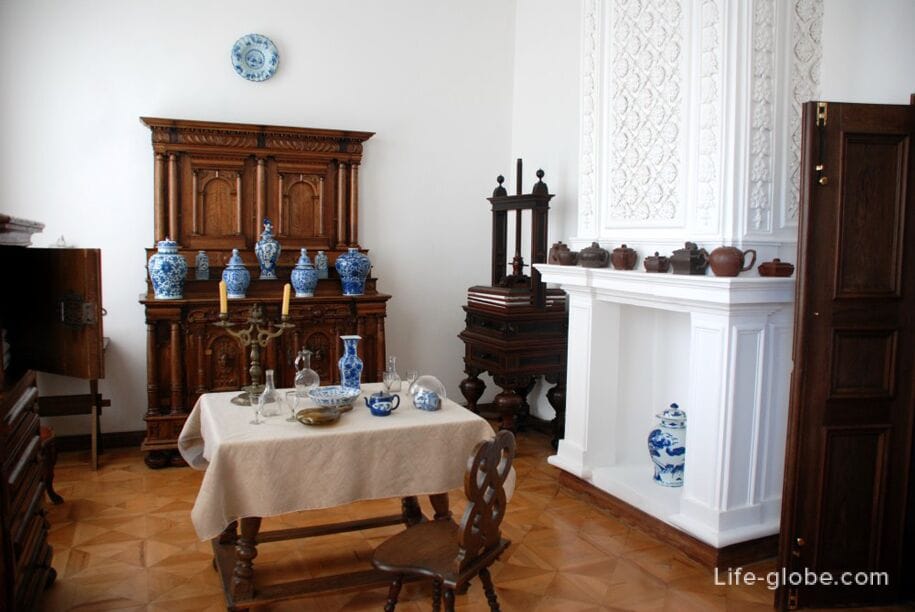
- Catherine's Building, which was built in 1747-1759 by the architect Francesco Rastrelli by decree of the Empress Elizabeth Petrovna (daughter of Peter I).
The palace was intended for holding court balls, receptions and banquets.
Initially, the palace was called the "Stone Building". It was renamed Catherine's Palace, after Catherine fled from its walls, who, as a result of the coup, ascended to the throne as Catherine II.
Today, in the camps of the Catherine Building there is a museum with the cabinet of Alexander I, where there are memorabilia related to the Patriotic War of 1812; and halls where collections of furniture and objects made of bronze are presented, as well as the tapestry " Peter I, saving fishermen during a storm on Lake Ladoga»;
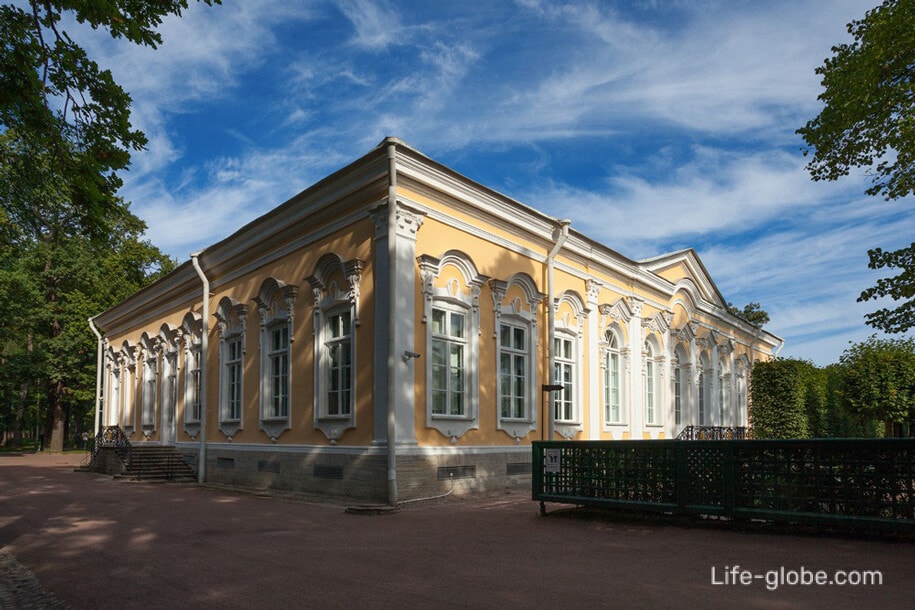

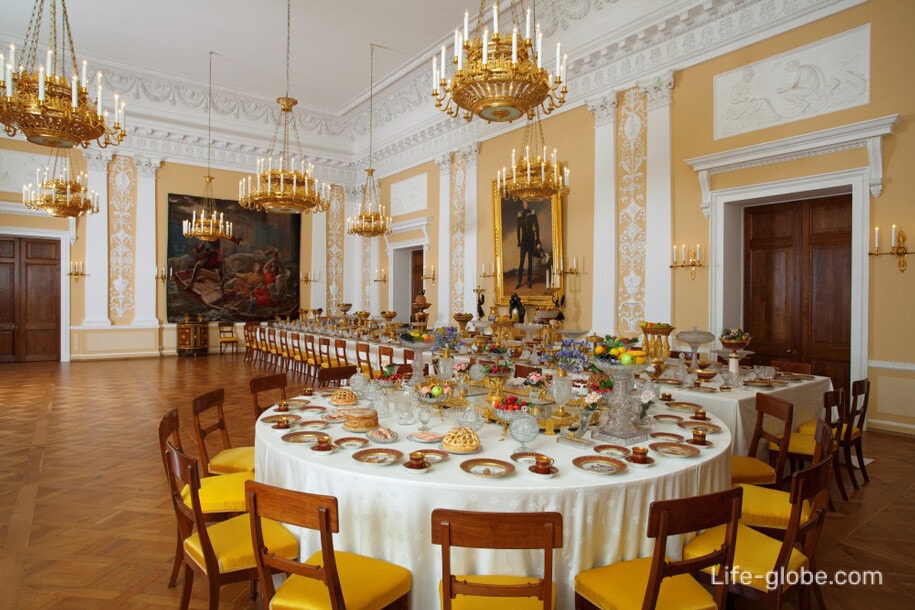
- Bath building, which is a complex of buildings for ceremonial and household purposes, built at different times.
Today it is a museum, where you can visit one of the rooms intended for the royal guests; the Soap room, where the water fun is located; the steam room with a room for cold baths; the Assembly Hall with a table covered with items from the Daily service made at the Imperial Porcelain Factory in the late 18th and early 19th centuries; as well as the Tafeldeker, Kitchen and Coffee Shop with a collection of ancient samovars. Learn more about the Montplaisir Ensemble…
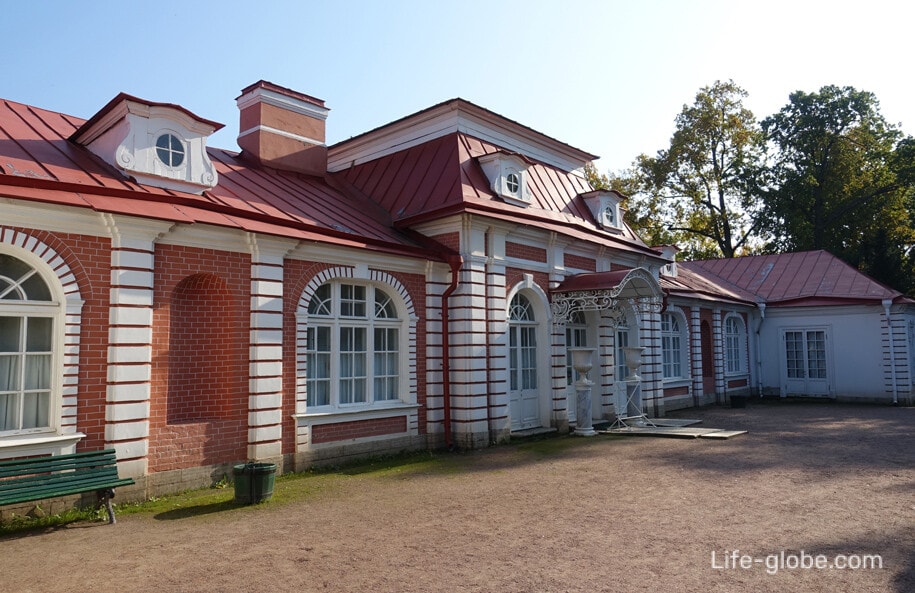
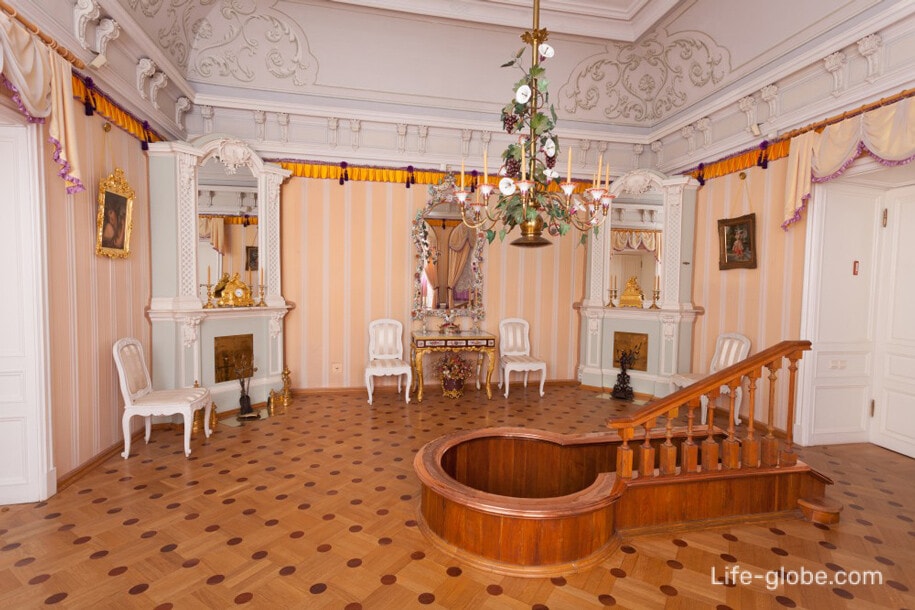

Aviaries
Aviaries - two light wooden pavilions; - twelve-sided gazebos topped with domes and light lanterns, in which cages with birds were hung in the summer. The eastern Enclosure was home to parrots, while the western Enclosure was home to songbirds: nightingales, thrushes, finches, finches, and bullfinches.
Today, as before, the aviaries are home to birds, including parrots and swans.
The aviaries are open during the summer season. They work as a kind of museum with a paid entrance. Learn more about the Lower Park of the Grand Palace of Peterhof...
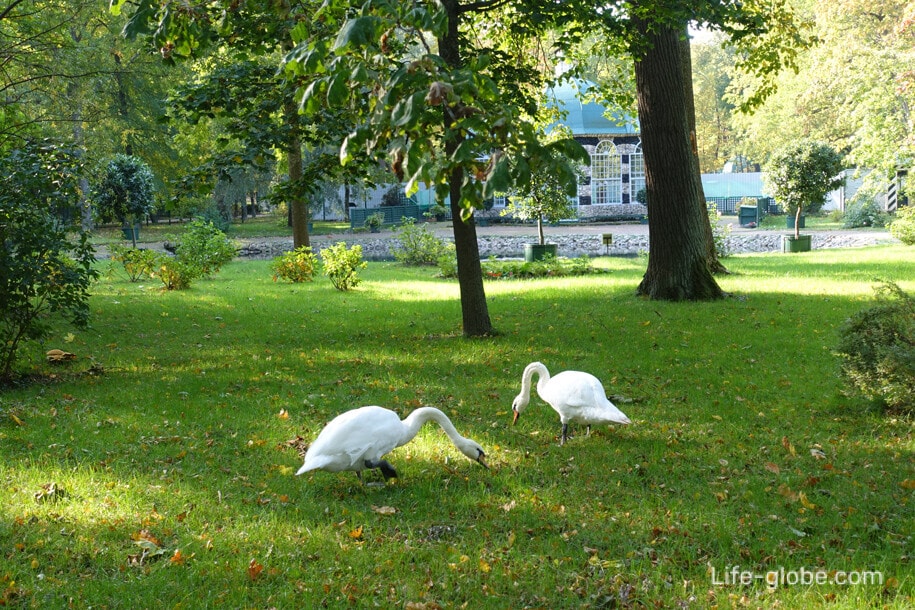
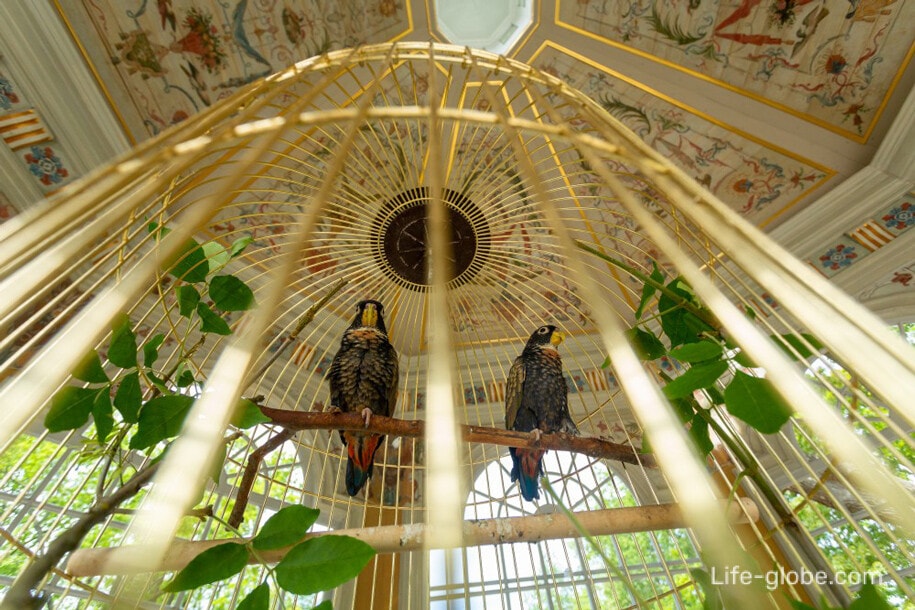
Practical information
The Grand Peterhof Palace is open all year round. Entering each of the palace's museums-for a hotel fee.
The Lower Park, the Upper Garden and the Grand Palace of the Palace and Park Ensemble "Peterhof" belong to the State Museum-Reserve "Peterhof".
The fountains of Peterhof are closed for the winter (do not work) - from about the middle of October until the 20th of April.
In winter, when the fountains are not working, the entrance to the Lower Park is free (free of charge).
During the summer season, the fountains are open and the entrance to the park is paid.
Entrance to each of the museums of the Lower Park is paid. Museum visits are not included in the price of the entrance to the Lower Park - they are paid separately.
The park's museums can be closed for the winter, open only on certain days that change depending on the season (summer, winter), and also stop working under certain weather conditions.
Tickets to the museums of the Grand Palace, the Lower Park and the park museums can be purchased at the ticket offices located directly near the entrances to the park or in advance-online on the official website.
The working hours of the palace and the park with museums, as well as the conditions of visiting and the cost of tickets, are recommended to check on the website of the State Museum-Reserve "Peterhof": peterhofmuseum.
You can visit Peterhof with one of the excursions
All the ways to get to Peterhof from St. Petersburg (the airport and the city center) can be found here →
Near the Palace and Park Ensemble "Peterhof" you can stop
The 4-star Novy Peterhof Hotel features a restaurant, a bar, parking, a tour desk, a spa area with an indoor pool, a gym, a steam bath, a Finnish cedar sauna and an aroma sauna.
The rooms are decorated in a modern style and feature a TV with satellite channels, free Wi-Fi, a safe, bathrobes and slippers, a hairdryer and free toiletries. Some rooms have a seating area.
The room rate can include: breakfast, breakfast + dinner or breakfast + lunch + dinner. Link to the hotel
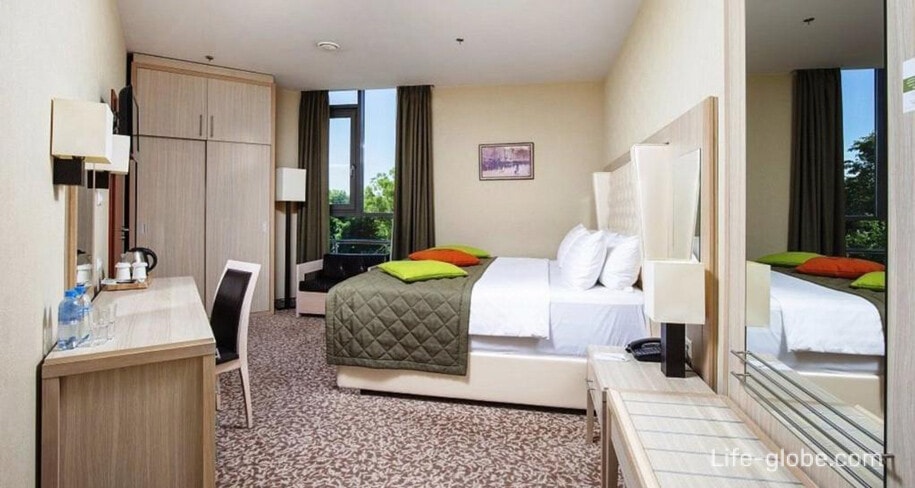
EGO-LOFT Apartment (Holgin Pond) they offer views of the lake and the city.
The apartmentfeatures air conditioning, a balcony, free Wi-Fi, a flat-screen TV, a washing machine, a bedroom, a kitchen with a dishwasher and a microwave, and a bathroom with a hairdryer and free toiletries. Link to the apartment
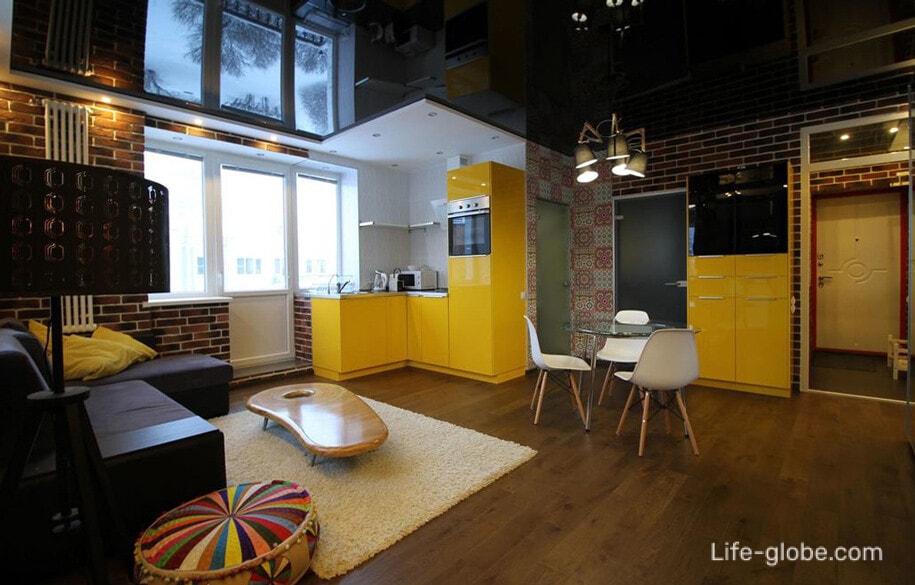
Severnaya Venezia Apartment с features a balcony with lake views, free Wi-Fi, a children's playground, a garden and a shared lounge.
The apartmentfeatures a bedroom, a flat-screen TV with cable channels, an equipped kitchen with a microwave and a refrigerator, a washing machine, and a bathroom with a shower. Link to the apartment
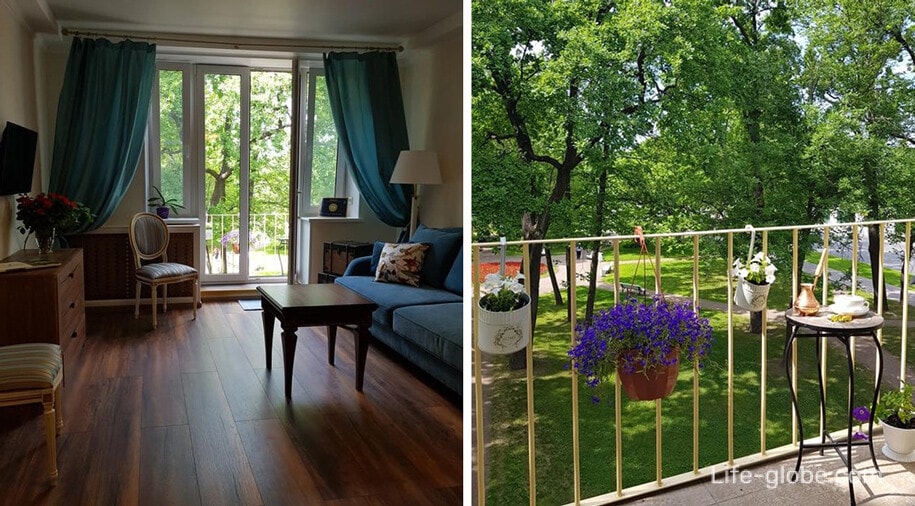
All accommodation facilities in St. Petersburg, including in the city center and in Peterhof, can be viewed and booked here






